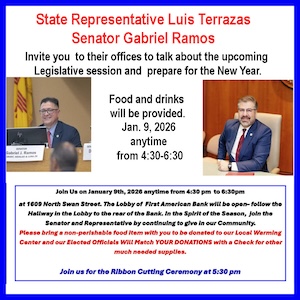By Ruben Leyva
This story continues where Part I left off — with the descendants of Norberta Ishnoh'n Leyva (pronounced Lay-vuh), the Warm Springs-Chihene matriarch whose steps spanned the Ojo Caliente (Cañada Alamosa), San Carlos, the Gallo Mountains, and beyond. Her grandson Procopio "Pomposo" Leyva, son of José Albino, known in local memory as El Indio del Gallo, was not alone in carrying her legacy. His uncles Frank and Jim, too, had names, songs, and ceremonies that defied erasure. This second part unravels the tangled identities assigned to them — Warm Springs Apache, Navajo, Mojave, Apache Frank, Lava — and traces how language, federal policy, and kinship all converged at places like Zuni Salt Lake and Carlisle. These are the names they were given, and the ones they reclaimed.
Jim Miller, known as Ishkayznn or "Chiricahua Jim," was not merely a U.S. Army scout in the twilight years of the Apache Wars—he was a ceremonial anchor among the Warm Springs-Chihene, a counter-voice to Geronimo's medicine songs, and a living memory of kinship that defied the rigid categories imposed by government rolls and policies. His sobriquet, "Jim," was possibly inherited from the well-known Navajo Indian Agent Jim H. Miller, a man whose presence loomed over the Southwest until he died in 1872. This legacy—and its layered echo—shaped how Jim Miller was perceived and remembered.
Indeed, Jim Miller's spiritual strength and identity as an Apache were not isolated attributes; they were cultivated through complex ties to both the Warm Springs and Bedonkohe ceremonial traditions, and possibly through interrelations with Navajo families at Bear Springs. His mother, Norberta Ishnoh'n, and his stepfather, Hosteen (Hastiin), were part of a migration and resistance legacy that connected Warm Springs Apaches to the Dineh, especially during the 1877 escape to Navajo country under Loco and Victorio. These alliances deepened when Apaches sought refuge at Fort Wingate and intermarried among the Bear Springs Navajo. The marriage of Hosteen and Ishnoh'n was not an isolated occurrence—it was part of a wider pattern of Apache-Dineh alliances that formed the backbone of survival and ceremonial life across this region. One such woman, Asdzáán Liba, married Thomas Varker Keam, an Anglo trader fluent in Navajo who worked closely with both Navajo and Apache families. Her name, "Liba," may reflect a phonetic adaptation of the Spanish surname Leyva or Leyba, possibly remembered in translation as "Lady Leyva."
The surname Leyva is one of the oldest documented Spanish surnames in the Americas, appearing in early colonial records. Around 1590, a military expedition led by Francisco de Leyva Bonilla ventured to the Rio Grande and into Pueblo country. After about a year of travel and imposing on Indigenous communities, Leyva and his men disappeared into the plains and were never seen again. Their fate was placed aside, but the name persists. Its transformation into regional variants such as Leiva, Leyba, Lava, and Liba demonstrates how colonial phonetics influenced Southern Athabaskan pronunciation. These variations originated from mishearings and transcriptions in Spanish and English phonetics. In Southern Athabaskan speech, voiced labials like "b" and "v" often alternate or soften depending on the speaker's fluency in Spanish or English. Therefore, a surname like "Leyva" might be written as "Liba" or "Lava" in official documents, depending on the recorder. When Frank Leyva, Jim's older brother, was listed at San Carlos in 1890, he was recorded as "Lava," living among the Mojave.
This linguistic trail is essential because it allows us to reattach family ties that were lost or broken. A modern example of these threads can be found in the 2012 Keams Family Reunion, held at Greasewood Springs, Arizona—a public gathering of the descendants of Thomas Varker Keam and Asdzáán Liba. A Navajo-Hopi Observer noticed a Facebook post from June 19 of that year listed the family contact names and locations. Keam's long-documented interactions with both Apache and Navajo families, along with Asdzáán Liba's name and legacy, demonstrate the ceremonial and kinship ties that connected the Gila Apache and Dineh. Their story reinforces the point: Apache-Navajo marriages were not fringe occurrences, but rather integral to the region's survival networks.
Jim and Frank inherited and extended that network. Frank was taken to Carlisle Indian School under the name Francisco in 1882, misclassified as Navajo—likely for protection or confusion. He had been captured or escorted there during a time when Apache identities were liabilities. At Carlisle, he was entered under a name that bore no mention of Chihene or Bedonkohe ties. Yet he reappeared later at Mescalero in 1885 and again in 1909, escorting his mother, Norberta, to visit Jim. He was never dead. He was always surviving.
His enlistment records under Lieutenant Maney confirm his presence in scouting companies beginning in October 1879. He reenlisted on January 1, 1880, and again on March 20, alongside Hosteen and others, totaling 63 Apache scouts. Listed as "F. 384 Frank (5'4")" and "H. 287 Hosteen (5'10")," their service bridged the familial with the federal. The fact that Frank was listed among these scouts suggests that he was never far from the conflict, even if he disappeared from American public memory.
Meanwhile, Jim Miller's ceremonial fame rose in March 1886, during tense negotiations at Cañon de Los Embudos. As part of Lieutenant Maus's scouts, Jim was assigned to counter Geronimo's powerful songs with his own rooted in Díí Go Téél, the Four Plains Coming Together, located in today's Plains of San Agustín in Catron County. This marks the northernmost reach of our Warm Springs territory on the southern edge of the Dineh homelands. Anthropologists Goss and Rivas emphasize the importance of song, seasonal cycles, and the deities White Painted Woman and Killer of Enemies in Chihene life. Jim's singing that night was not just defensive—it was ontological.
While Jim was later relocated to Mescalero and survived through formal recognition, Frank returned to Mexico. According to his sons, he died in 1941 in San Francisco de Conchos, Chihuahua, after decades of navigating the spaces between documentation and erasure. His path—steeped in silence and reclassification—was no less sacred. His name, Biszahe Gunde, translates roughly to "Voice from a Deep Place."
Frank's descendants, like mine, remain non-federally recognized Gila Apaches. Jim's descendants include the Cojo and Yazza families, some of whom stayed at Mescalero. Both lineages are true. Both are remembered.
Hosteen's name appears not only in scouting rolls but also in the 1978 Indian Claims Commission case titled The Navajo Tribe of Indians; The Fort Sill Apache Tribe of Oklahoma; The Chiricahua Apache Tribe, et al. v. The United States of America (Docket Nos. 229, 30, 48). There, he is identified as Hastiin Bisii' Łigai (pronounced Hah-steen Biht-see' Thlih-guy), a member of the Dibé Tłizhíní (Black Sheep Clan) living at Zuni Salt Lake—a sacred site 99 miles south of Fort Wingate. This matches the "Hostee del-a bisha legay" listed as Frank's father in the 1882 Carlisle Indian School record, where Frank was misclassified as Navajo. The name Hastiin Bisii' Łigai translates to "Mister White Hair," combining Dineh kinship, land, and clan ties. These records confirm that Frank and Jim's family connected both the Apache and Navajo worlds, rooted in a homeland that was both ceremonial and geographic. This homeland included Zuni Salt Lake, Rito Quemado, Mangas, and Ojo de Gallo—where my family still lives.
Ana Baca's oral history shows that El Indio del Gallo—probably Procopio Leyba [Leyva], Frank's relative—lived at Ojo de Gallo, on the north side of Escondido Mountain. John Lewis Taylor's research on Fort Wingate confirms this, identifying Ojo de Gallo as a crucial location for Apache families to reside and find safety. This connection between Baca's oral story and Taylor's research supports the idea that Procopio Leyva was there. This site, full of springs and history, is sacred. It links the Leyva family not only to Chihene survivors but also to the ongoing blending of Apache and Navajo ceremonial landscapes. At Turkey Spring, 12 Apaches were left behind in 1877, possibly including relatives of ours. These places are more than lands—they are stories.
In all of this, Jim's nickname, "Chiricahua Jim," connects not only to his ceremonial power but also to the regional legacy of Agent Jim H. Miller, a federal official who significantly influenced the identities of many Apaches and Dineh through his record keeping and alliances. After Miller died in 1872, Thomas Varker Keam replaced him as the Indian Agent at Fort Defiance. Keam, a trader fluent in Navajo, would later marry Asdzáán Liba and be stationed near Bear Springs, further intertwining the personal, political, and spiritual worlds of Apache and Dineh families. The reuse of the name "Jim" may have served both as a tribute and a code— a way of navigating power.
Ultimately, this story is more than just about two brothers. It's about how names, marriages, songs, and springs helped a people survive deportation, assimilation, and silence. Through kinship and memory, we endure.
And through names like Liba, Lava, Leyba, and Keam—spread across springs, schools, and family reunions—our kin (kíí) continue to reclaim what was always ours: a legacy of survival, ceremony, and belonging.











